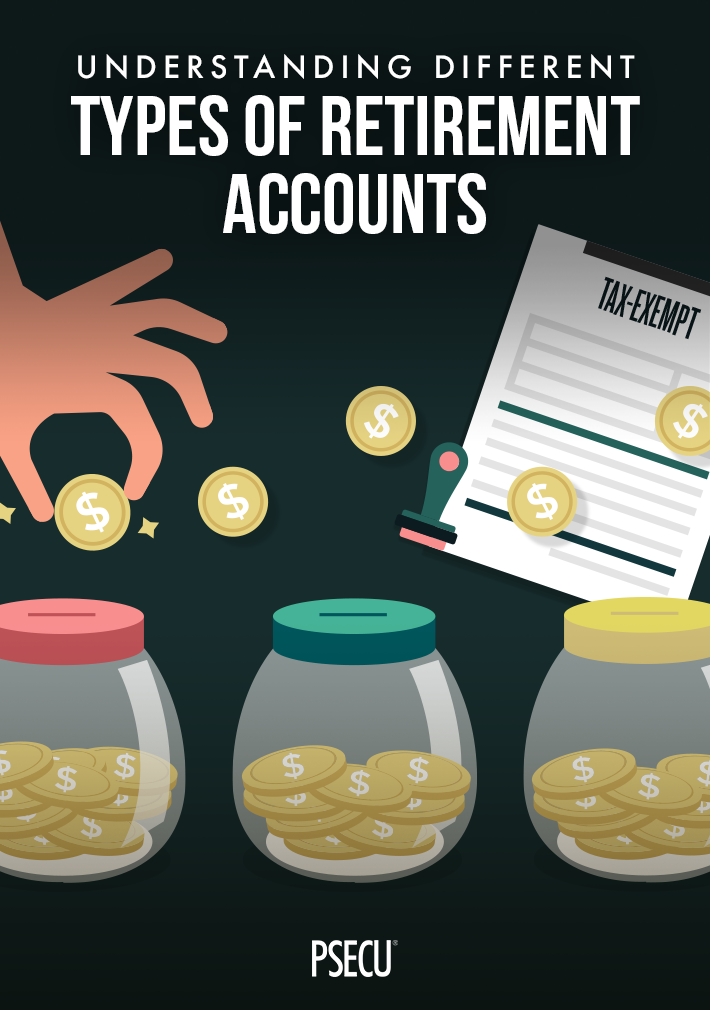Even if your retirement is far in the future, it’s important to prioritize today. It’s impossible to save 30- or 40-years’ worth of money at the last minute, after all. Fortunately, you have multiple options when it comes to planning for retirement.
Depending on your job status, you might have access to one or more types of retirement accounts. Getting to know these accounts can help you choose the right one for your situation and secure your financial well-being. So, what’s available?
Employer-Sponsored Retirement Accounts
The type of employer-sponsored retirement account you can open will vary based on the classification and size of the business. Companies with fewer than a certain number of employees can offer plans that larger businesses cannot. Nonprofit organizations can also offer their team members retirement plans that aren’t available to for-profit businesses.
Some examples of the types of retirement plans that your employer might offer include:
-
401(k) plans: An employer of any size or type can offer a 401(k) plan to its employees. A 401(k) is an example of a defined contribution plan, meaning that both you and your employer can contribute to the plan. Your employer might offer to match your deposits, up to a certain percentage of your salary. Contributions to a 401(k) plan are tax-deferred, meaning you can deduct them from your income for the year. The contribution limit is $19,500 per year or $26,000 for people over age 50.
-
403(b) plans: Schools and some types of nonprofit organizations offer their employees the chance to save for retirement through a 403(b) plan. Like a 401(k), both employees and employers can contribute to the plan, and contributions are made pre-tax. The contribution limit is the same for a 403(b) as it is for a 401(k) plan.
-
457(b) plans: If you work for the government or for a certain type of tax-exempt, non-government entity, you might have access to a 457(b) plan through your employer. A 457(b) plan has the same contribution limit as a 401(k) or 403(b) plan. The money you contribute to a 457(b) plan is pre-tax.
-
SIMPLE IRA: A SIMPLE IRA plan is typically an option for employers that have fewer than 100 employees. It’s meant to be a more cost-effective and affordable plan compared to 401(k) plans and others. If your employer offers a SIMPLE IRA, they’re required to contribute up to 3% of your compensation or a non-elective contribution worth 2% of your salary. Employers who choose the non-elective contribution option need to contribute to their team member’s SIMPLE IRA plans whether the employee makes a contribution or not.
-
SEP IRA: A simplified employee pension (SEP) plan is another affordable retirement account option that’s ideal for smaller companies. However, businesses of any size might offer it. If you work for a company that offers a SEP, only the employer makes contributions to it – up to 25% of your annual salary.

Retirement Accounts for the Self-Employed
If you’re a freelancer, own your own business, or are otherwise self-employed, you still have options for retirement, even if you don’t have a plan through an employer. Both SIMPLE IRA and SEP IRAs are available.
Another option is a “one participant 401(k)” plan, or a solo 401(k). A solo 401(k) account is only for self-employed people who don’t have any employees. The one exception to this is spouses who are also employed by their spouse’s company. When you have a solo 401(k), you get to play the role of employee and employer. You can contribute to it (up to $19,500, or $26,000 if over age 50) as an employee and up to 25% of your compensation as the employer.
Individual Retirement Accounts
You might work for an employer that doesn’t offer retirement accounts to its employees, or your status as a part-time worker might mean that you aren’t eligible for a retirement plan through your job. Alternatively, you might want to supplement your employer-sponsored retirement plan with additional savings.
Individual retirement accounts (IRAs) provide you with a way to save for retirement without an employer. Two types of IRA are available: traditional and Roth.
If you open and contribute to a traditional IRA, you can deduct the amount you contribute from your income for the year when you file your taxes. A traditional IRA’s money and earnings grow tax-deferred until you start making withdrawals in retirement.
If you decide to open a Roth IRA, the contributions you make are after-tax, meaning you cannot deduct them from your income for the year. The trade-off is that when you reach retirement and start withdrawing from a Roth IRA, you do not have to pay income tax on the amount you contributed originally or on any earnings in the account.
The contribution limit for a traditional or Roth IRA is $6,000 per year, or $7,000 if you are over age 50. The limit is a combined limit, meaning if you have both a traditional and a Roth IRA, you can put up to $6,000 in the two accounts in total, not up to $6,000 in each.
PSECU has both Roth and traditional IRAs available to help you get your retirement savings on track. Open an account today and check out our Resource Center for more helpful tips on saving for retirement.
The content provided in this publication is for informational purposes only. Nothing stated is to be construed as financial or legal advice. Some products not offered by PSECU. PSECU does not endorse any third parties, including, but not limited to, referenced individuals, companies, organizations, products, blogs, or websites. PSECU does not warrant any advice provided by third parties. PSECU does not guarantee the accuracy or completeness of the information provided by third parties. PSECU recommends that you seek the advice of a qualified financial, tax, legal, or other professional if you have questions.
